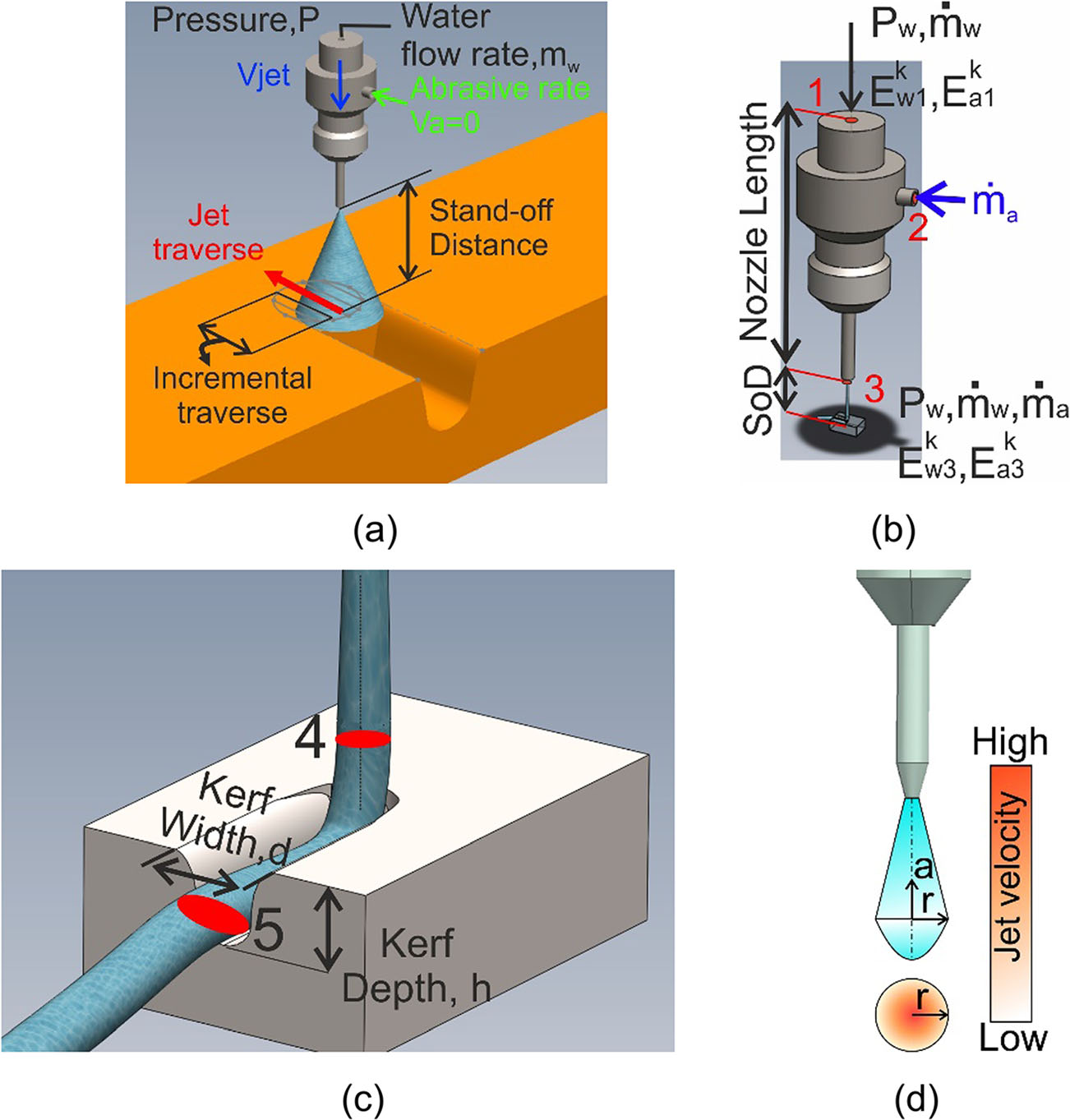
Controlled depth abrasive waterjet machining (AWJM) is an unconventional and promising process for materials introducing challenges in conventional machining for high value manufacturing (HVM) industries such as aerospace and automotive. In such applications, waterjet acts as a flexible cutting tool compared to conventional milling. The kerf profile, i.e. the removed material volume, nonlinearly depends on the process parameters such as water pressure, jet traverse speed, abrasive rate, and stand-off-distance unlike the deterministic case in mechanical milling. Thus, prediction of kerf profile, i.e. width, depth, and shape, is of great importance for accurate and efficient process development and tool path generation in AWJM. In this paper, a novel analytical model is proposed for prediction of kerf profile, relying on conservation of energy and momentum, where the material removal is related to the machinability number of the workpiece material, so that the requirement of calibration tests is eliminated. Then, the proposed AWJM process model is used in a framework to predict 3D in-process workpiece (IPW) geometry, which is represented using signed distance field (SDF) approach. The process model is verified by experimental results with an average error of 15%, where the machine profiles are measured by confocal optical microscopy. The IPW simulation model is verified by variable jet traverse speed AWJM experiments, considering the significant effect of jet traverse speed on the kerf depth. The machined specimens are sectioned along the jet traverse direction and the cross section of the test pieces is visually compared with the simulations. The machined profiles introduced some amount of undulated profile, which may be attributed to the non-consistent abrasive supply in the system. It is shown that the proposed IPW simulation approach demonstrates a reasonable accuracy to plan controlled depth AWJM processes.